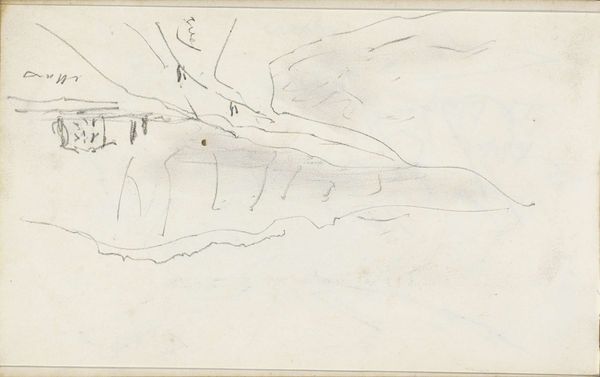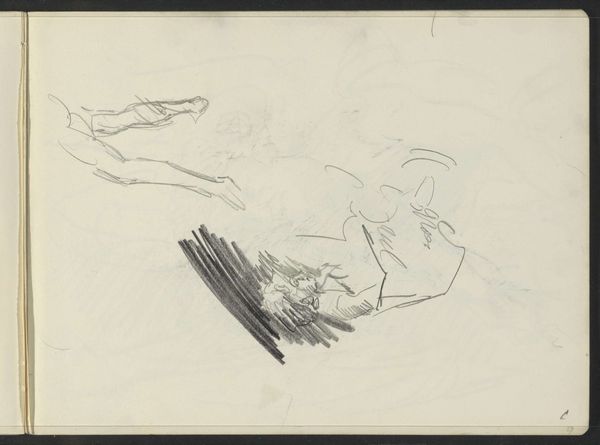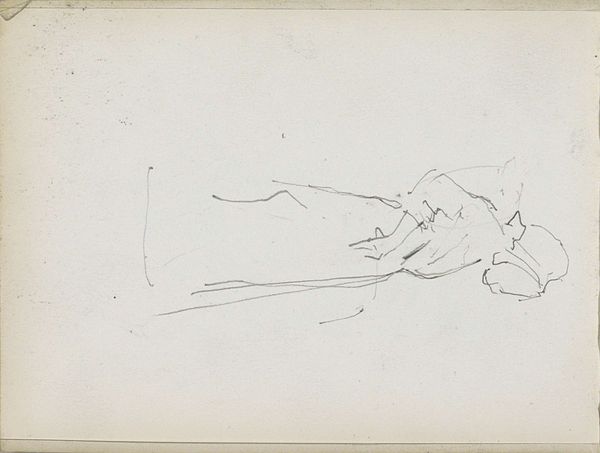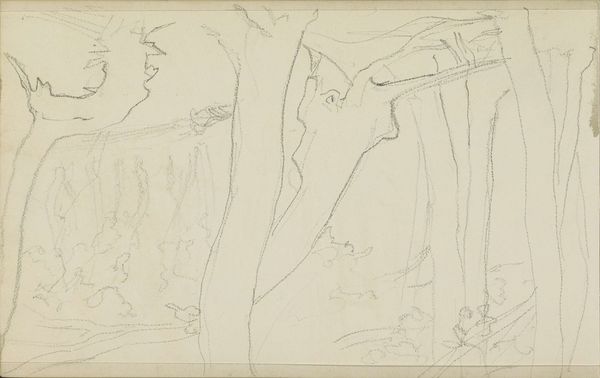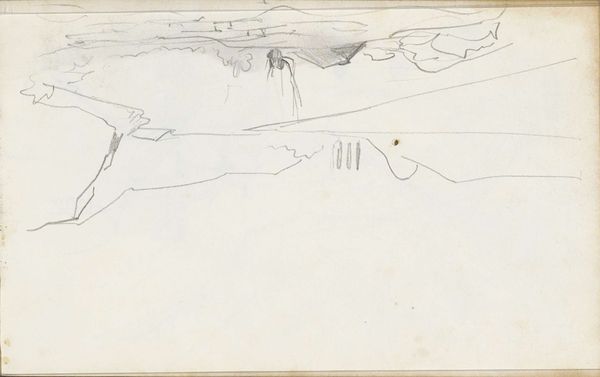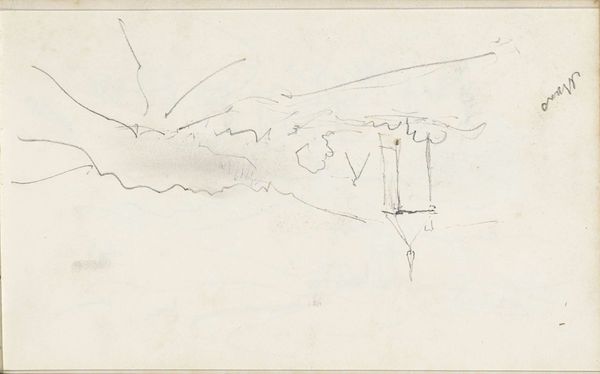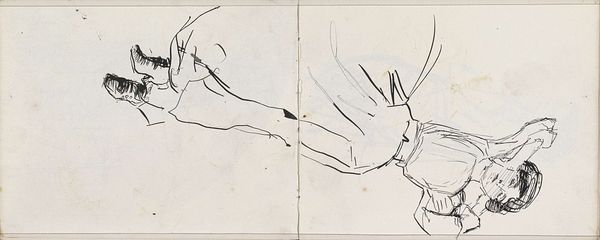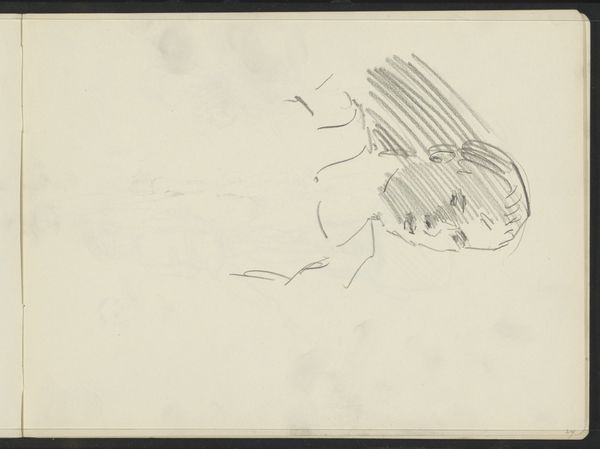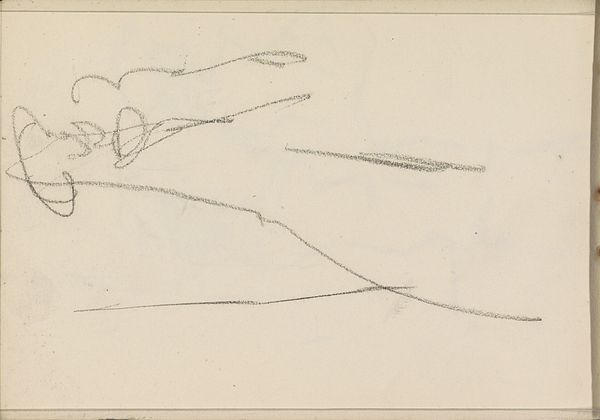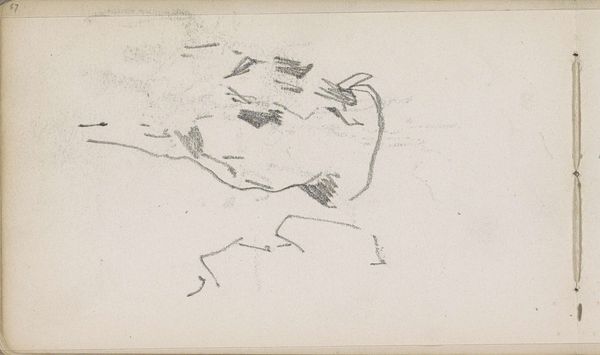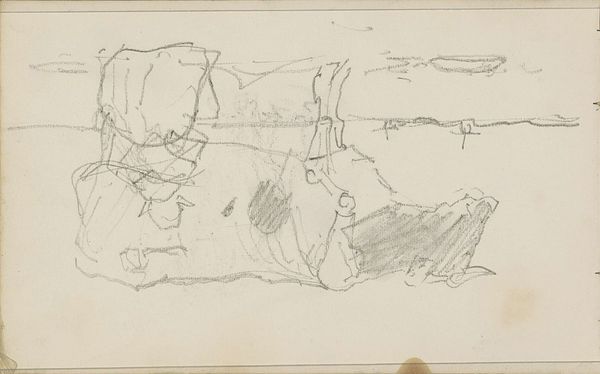
drawing, paper, pencil
#
drawing
#
landscape
#
paper
#
romanticism
#
pencil
Copyright: Rijks Museum: Open Domain
Editor: This is "Path Through the Mountains on the Meuse," a pencil drawing on paper by Johannes Tavenraat, dating from 1840 to 1841. The sketchiness gives it an ephemeral feel, like a fleeting moment captured in time. What do you see in this work? Curator: I see more than just a landscape; I see a commentary on humanity's place within the Romantic era's societal shifts. Tavenraat gives us this path. But what does it mean for a path to lead “through” the mountains? Consider who might traverse such a route. Was this accessible for everyone? Were there people excluded, such as women, people of colour, or the poor? Editor: I hadn't thought about it that way. The drawing itself seems so simple. Curator: Exactly, and that’s where the complexity lies! It’s easy to view this as a harmless landscape, appreciating its artistic qualities but let's reflect on the politics inherent to landscapes. Who had the luxury of contemplating romantic landscapes and whose labour made such leisure possible? Does this image romanticize the land while ignoring exploitation, for instance? Editor: So, the drawing is actually inviting us to question who gets to experience and benefit from nature. Curator: Precisely. How can we, as viewers today, unpack those layered meanings? Does this image prompt reflection on who is represented, and who is notably absent, in romantic landscapes? Editor: It really changes my perspective on what I initially saw as just a pretty drawing. Curator: That's the power of art. To move beyond surface aesthetics, to dig deeper into history and its contemporary resonances. It shows us how artistic expression intersects with cultural context to tell broader truths, however unsettling they might be. Editor: Thank you for helping me unpack the message behind the artwork, the historical setting and what its influence can mean for our current perspective. Curator: It’s a collective journey. Every perspective adds nuance. That is how we collectively unpack the art.
Comments
No comments
Be the first to comment and join the conversation on the ultimate creative platform.
